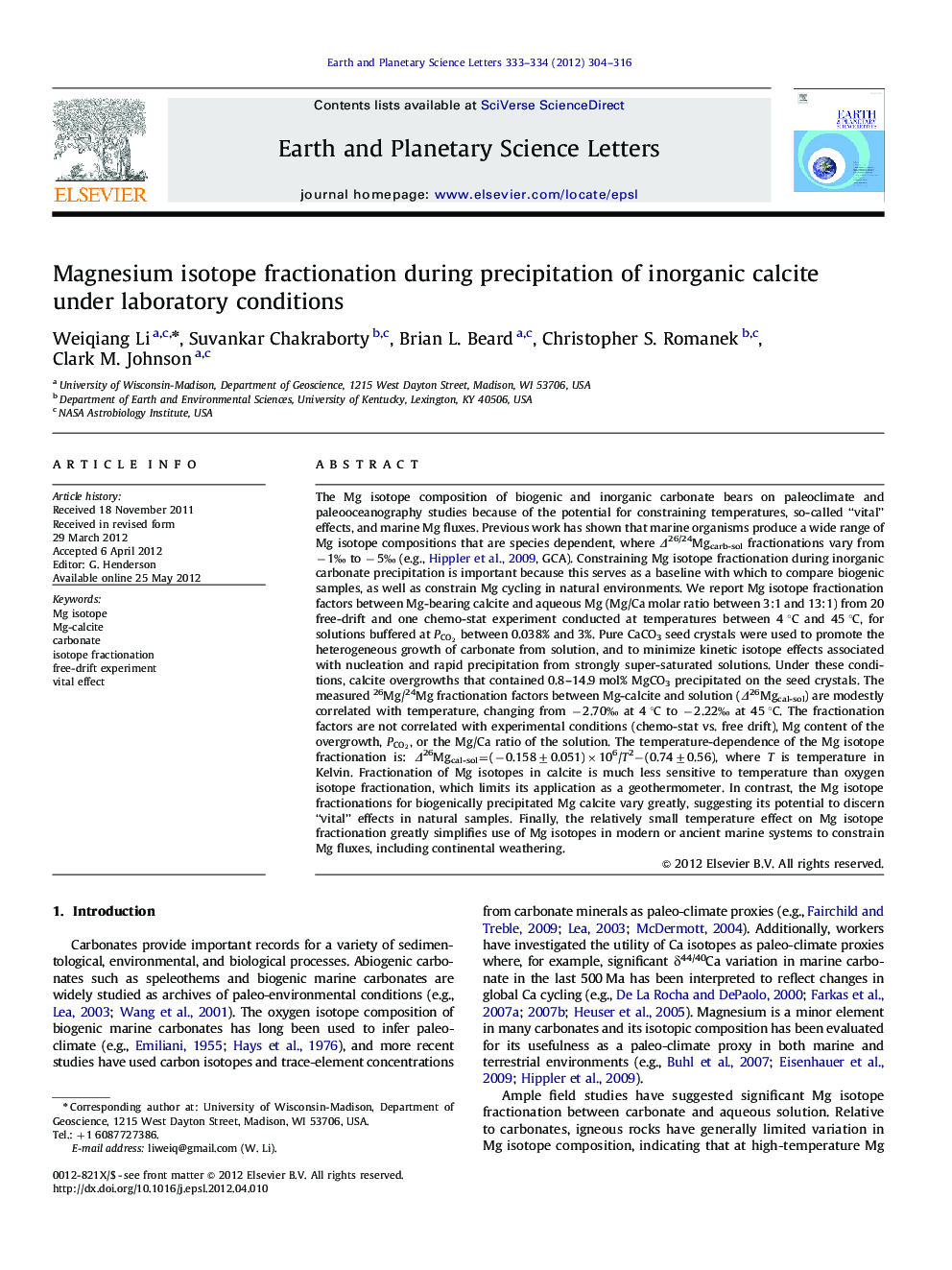| کد مقاله | کد نشریه | سال انتشار | مقاله انگلیسی | نسخه تمام متن |
|---|---|---|---|---|
| 6430657 | 1634804 | 2012 | 13 صفحه PDF | دانلود رایگان |

The Mg isotope composition of biogenic and inorganic carbonate bears on paleoclimate and paleooceanography studies because of the potential for constraining temperatures, so-called “vital” effects, and marine Mg fluxes. Previous work has shown that marine organisms produce a wide range of Mg isotope compositions that are species dependent, where Î26/24Mgcarb-sol fractionations vary from â1â° to â5â° (e.g., Hippler et al., 2009, GCA). Constraining Mg isotope fractionation during inorganic carbonate precipitation is important because this serves as a baseline with which to compare biogenic samples, as well as constrain Mg cycling in natural environments. We report Mg isotope fractionation factors between Mg-bearing calcite and aqueous Mg (Mg/Ca molar ratio between 3:1 and 13:1) from 20 free-drift and one chemo-stat experiment conducted at temperatures between 4 °C and 45 °C, for solutions buffered at PCO2 between 0.038% and 3%. Pure CaCO3 seed crystals were used to promote the heterogeneous growth of carbonate from solution, and to minimize kinetic isotope effects associated with nucleation and rapid precipitation from strongly super-saturated solutions. Under these conditions, calcite overgrowths that contained 0.8-14.9 mol% MgCO3 precipitated on the seed crystals. The measured 26Mg/24Mg fractionation factors between Mg-calcite and solution (Î26Mgcal-sol) are modestly correlated with temperature, changing from â2.70â° at 4 °C to â2.22â° at 45 °C. The fractionation factors are not correlated with experimental conditions (chemo-stat vs. free drift), Mg content of the overgrowth, PCO2, or the Mg/Ca ratio of the solution. The temperature-dependence of the Mg isotope fractionation is: Î26Mgcal-sol=(â0.158±0.051)Ã106/T2â(0.74±0.56), where T is temperature in Kelvin. Fractionation of Mg isotopes in calcite is much less sensitive to temperature than oxygen isotope fractionation, which limits its application as a geothermometer. In contrast, the Mg isotope fractionations for biogenically precipitated Mg calcite vary greatly, suggesting its potential to discern “vital” effects in natural samples. Finally, the relatively small temperature effect on Mg isotope fractionation greatly simplifies use of Mg isotopes in modern or ancient marine systems to constrain Mg fluxes, including continental weathering.
⺠A systematic experimental investigation of Mg isotope fractionation during calcite precipitation. ⺠Experiments cover wide temperature and chemical ranges. ⺠Used both chemo-stat and free-drift experiments, used seed crystals to reduce kinetic isotope effects. ⺠Observed temperature-dependent Mg isotope fractionation: Î26/24Mgcal-sol=(â0.158±0.051)Ã106/T2â(0.74±0.56).
Journal: Earth and Planetary Science Letters - Volumes 333â334, 1 June 2012, Pages 304-316